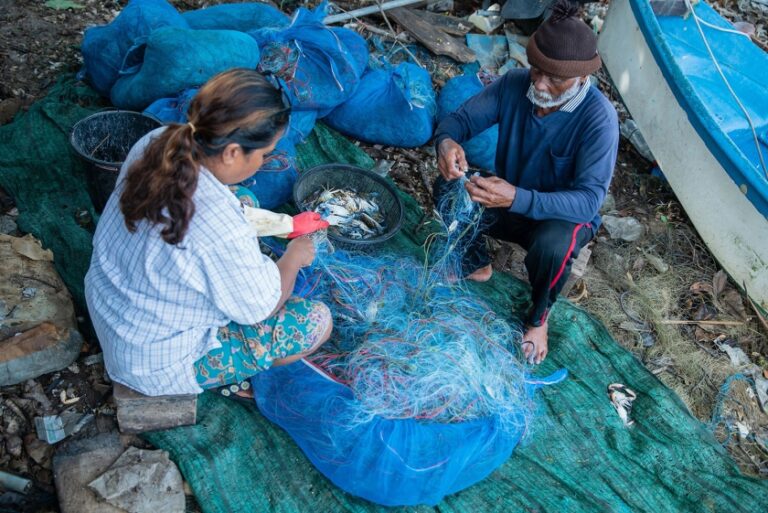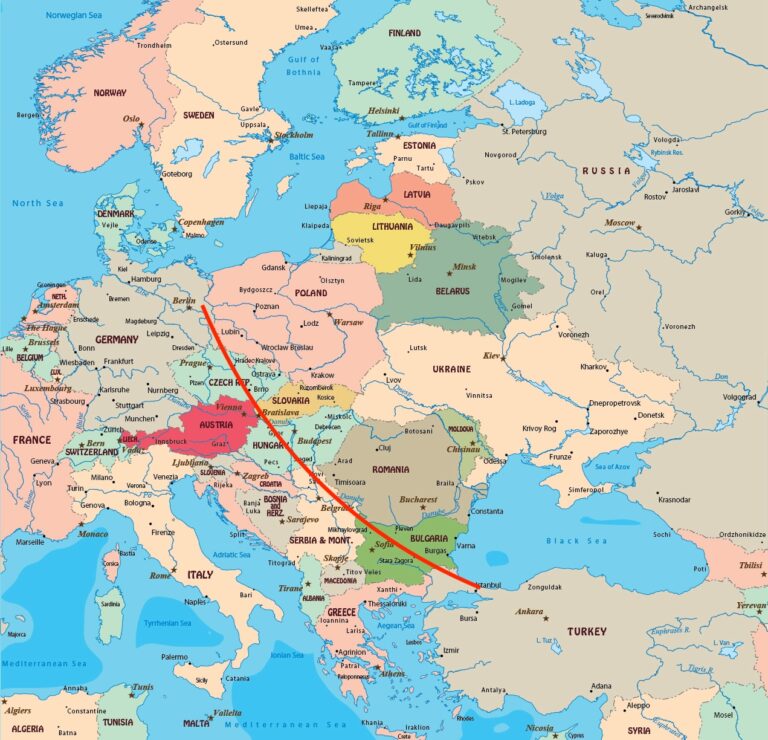Floating through the crystal-clear waters off the east coast of Thailand, fisher Sutham Hemmanee spots a large female crab amidst the morning’s haul, its underside swollen with the promise of offspring.
“A female crab like this can produce millions of babies,” the 57-year-old says, pointing to the bulging yellow pouches attached to the crab’s stomach. “We put these egg-carrying females in the crab bank.”
Traditionally, such blue swimming crabs would have been sold for profit. But after Hemmanee noticed the once-plentiful crab populations of Ban Don Bay begin to dwindle a decade ago, he turned his attention to conservation.
Together with his fellow fishers he started separating the mothers-to-be in their catch and protecting them in tanks on shore, providing the eggs a safe space to hatch before being released back into the wild.
The crab bank was born.

Despite the promise shown by his initiative, the perilous nature of the sea for baby crabs meant many died on the hazardous journey into adulthood.
To improve their chances of survival, the United Nations Environment Programme (UNEP) collaborated with local fishing communities and researchers to create safe havens where crabs, and other marine species, can breed and hatch their offspring. The areas, formally known as fisheries refugia, are part of a larger network of UNEP-supported marine sanctuaries spread across six southeast Asian countries.
A key industry
The blue swimming crab provides around 80 per cent of income for local communities in Ban Don Bay, which sits in the Gulf of Thailand. The bay’s 2019 harvest was valued at almost US$10 million, the third highest in the country.
RELATED

The shallow waters of Ban Don are rich in sediment deposited from nearby waterways, making it an ideal nursery and feeding ground for the crab and other marine life, including the elusive dugong, which grazes on its bed of seagrass.
The meeting point between the Pacific and Indian oceans, the Gulf of Thailand and nearby South China Sea are global hotspots of marine biodiversity, hosting nearly all giant clam species, every coral type and one-third of all seagrass varieties.

These waters also sustain vital fisheries, crucial for the food security of the 270 million people residing along their coasts and contributing US$3.7 billion to the region’s gross domestic product annually.
However, mounting population pressures have driven fishers to employ drastic methods to sustain catches. Some use explosives and poisons, while others drag heavy nets along the seafloor, wreaking havoc on fragile seabeds essential for feeding and sheltering sea life. This degradation of coastal habitats harms marine biodiversity and erodes the economic and social fabric of coastal communities, putting their long-term future in doubt.
Balancing conservation needs with those of local communities is an aim of The Biodiversity Plan, a global framework to halt and reverse nature loss by 2030 formerly known as the Kunming-Montreal Biodiversity Framework. Among its four goals and 23 targets are Target 2 to restore 30 per cent of all degraded ecosystems and Target 10 to ensure sustainable management of areas under agriculture, aquaculture, fisheries and forestry. The ongoing efforts in Ban Don Bay showcase how local communities can bring the goals of this global framework to life and inspire wider adoption.
“The blue swimming crab is key to our livelihoods,” says Hemmanee. “Since my grandfather’s generation, we have been crab fishers. I worry about what the next generation will have left if we don’t change our ways.”
Investing in the future
Recognizing the urgency of the situation, the Thai Ministry of Environment and Fisheries, with support from UNEP, collaborated with local governments, the private sector, and coastal communities to address deteriorating marine habitats. Their goal was to restore the ecological balance while ensuring the well-being of coastal communities.
Building on the groundwork laid by local fisher groups and their crab banks, a team established a sprawling 900-acre marine safe-haven in Ban Don Bay.
Destructive fishing practices, such as the use of small-holed nets, have been phased out and fishers have agreed to reduce activity during critical spawning periods.

Fishers operating nearby have pledged to release any baby crustaceans caught at sea or bring them to a local crab bank for protection.
Research conducted by Viya Crab Processing, a local canning company, revealed that keeping juvenile crabs in a nursery for 25-30 days increases their survival rates by as much as 95 per cent.
“We release about 100,000 crabs back into the sea each month,” says Somsak Makhathan, the manager of the local crab bank. The local crab population has increased by about 60 per cent, he says.
The UNEP-led initiative is part of the broader Global Environment Facility-funded Fisheries Refugia Initiative. The project is designed to enhance fisheries management and preserve critical marine habitats across the South China Sea and Gulf of Thailand.
The first step of the project in Thailand, says Praulai Nootmorn, marine fisheries expert at the Thai Department of Fisheries, was to shift perceptions and get everyone on the same page.
“We had to get the stakeholders to realize the economic risk if crab populations were not restored,” says Nootmorn. “Now that they realize their business model is at risk, the private sector is rallying behind conservation activities and supporting local fishers to fish sustainably.”

Replicating success
The success of the refugia approach lies in its focus on sustainable use rather than strict no-fishing rules. Unlike traditional marine protected areas, which often alienate fishing communities who view their primary purpose as biodiversity protection, the refugia approach encourages fishers to become the protectors of the species they depend on.
These sanctuaries for marine life are being replicated across the South China Sea. UNEP Fisheries Refugia Initiative partners have established a network of sites that link up over 1.3 million hectares across six countries, an area more than 10 times the size of New York, safeguarding critical habitats for several species, including black tiger prawn, siganids, mackerel, blood cockle, the juvenile grouper, spiny lobster and redbelly yellowtail fusilier.
The project is a joint effort between the Southeast Asian Fisheries Development Centre and governmental agencies from Cambodia, Indonesia, Malaysia, Philippines, Thailand and Viet Nam.
The collaboration between fisheries and environment ministries is often limited in Southeast Asia and beyond, with conservation and economy seen as separate, competing issues, according to Leticia Carvalho, Head of the Marine and Freshwater branch at UNEP.
“The fisheries refugia approach offers a chance to bridge this gap,” says Carvalho. “By empowering local communities to conserve the environment, it also ensures they can use it more efficiently, and reap its rewards for generations to come.”
Across the region, policy reforms are already underway, with the six countries embracing the refugia model as a foundation of marine management and integrating it into legislation.
“The lessons learned from the South China Sea region will serve as a model for other areas facing similar challenges, paving the way for more holistic approaches to fisheries and habitat conservation worldwide,” says Carvalho.

For Hemmanee and his fellow fishers, the stakes are clear. “If we don’t work together,” he warns, “the crabs will become nothing more than a legend.”
The planet is experiencing a dangerous decline in nature: 1 million species are at risk of extinction, soils are turning infertile, and water sources are drying up. The Biodiversity Plan, formerly known as the Kunming-Montreal Global Biodiversity Framework, aims to reverse this trend by 2030. UNEP is supporting countries to achieve The Biodiversity Plan’s goals and targets through restoring nature’s contributions to people, integrating biodiversity into policies, promoting sustainable use and preventing financial practices that harm the environment.
www.unep.org




